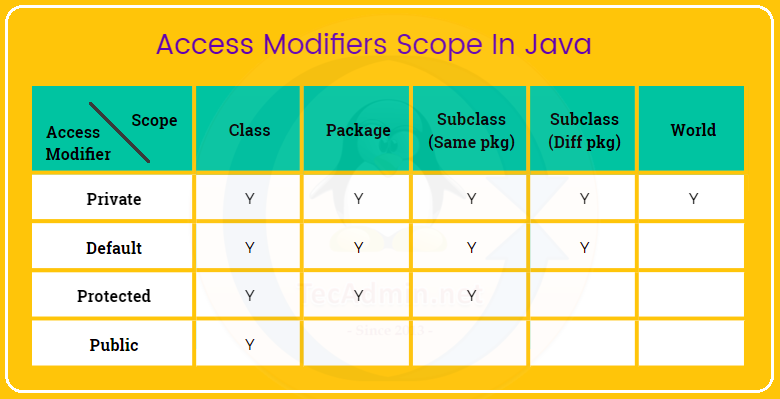An access modifier is a special kind of variable declaration that controls how and where other code can use the declared class, variable, or method. This blog will explain what access modifiers are and the three different levels of visibility for classes, methods, and variables with some practical examples.
Understanding the scope of your code is essential for writing readable and maintainable programs. Access modifiers are one way to achieve this goal. They tell other users of your code how you want them to interact with specific methods or variables. If you’re new to Java programming, these concepts may seem confusing at first glance; however, once you learn about them once or twice, they become much clearer. Keep reading to learn more about access modifiers in Java.
Access Modifiers in Java
Access modifiers are special keywords that let you specify how other code can interact with specific methods or variables within classes. Like many programming concepts, access modifiers are simple in practice but can seem confusing at first. Once you understand them, they can help make your code more readable and maintainable.
There are four different types of access modifiers in java:
- Private: A private member is accessible within the class scope.
- Default: A member with no access modifier is also known as package-private. Which is only accessible within classes in the same package.
- Protected: A protected member is accessible within all classes in the same package and the subclasses of the other packages.
- Public: A public member is accessible to anywhere.
See the below tabular design to better understand the access level of different modifiers in Java.

In the above representation, the fields with ‘Y’ is the allowed scope of modifiers. The empty fields don’t allow accessibility of any member.
Conclusion
The main difference between each visibility level is who can access them: – public – everyone – private – only the class that contains the variable/method – protected – the class that contains the variable/method and any classes derived from it The visibility of the class, method, or variable determines if and how other methods or classes can interact with it. This is called encapsulation, and it’s one of the cornerstones of object-oriented programming. And now that you know what access modifiers are and how they work, you can use them in your own code to make it more readable and maintainable.



